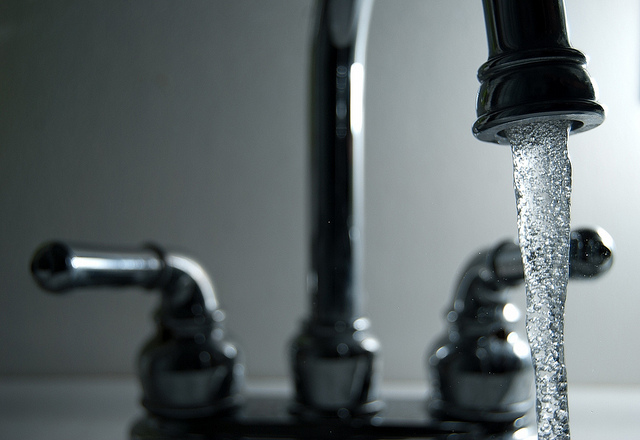The Falmouth, Massachusetts Board of Health recently cautioned pregnant women in their first and second trimesters about a drinking water test result that could affect their babies' birth weights and increase the risk of early deliveries. Water test results showed increased levels of two disinfection byproducts, showing that levels were above the limits set by the U.S. Environmental Protection Agency (EPA). This is not the first time that a situation like this has occurred. A flurry of such frightful findings throughout the United States has raised serious concerns about the safety and monitoring of public drinking water supplies, bringing up many important questions about additives. What are these disinfection byproducts? Why are they in our drinking water? And, perhaps most importantly, what can we do about it?

What is really in our water?
Disinfection byproducts are formed when disinfectants such as chlorine are added to the public water supply to control dangerous microbial contaminants in our drinking water. Although disinfectants are added with the intention of protecting the population from unwanted pathogens in municipal water supplies, they also have undesirable chemical effects. Chlorine reacts with the naturally occurring organic and inorganic matter found in water to form harmful compounds such as trihalomethanes (THM) and haloacetic acids (HAA), along with hundreds of others toxins, collectively termed “disinfection byproducts.” The four main forms of trihalomethanes are chloroform, bromodichloromethane, dibromochloromethane and bromoform. The Maximum Contaminant Level (MCL) regulated by the EPA for the concentration of Total trihalomethanes (TTHM) in treated water is 80 ppb. The known haloacetic acids produced are monchloroacetic acid, dichloroacetic acid, trichloroacetic acid, monobromoacetic acid and dibromoacetic acid. The EPA has set the safe HAA limit to 60 ppb. While these unwanted disinfection byproducts are monitored with some degree of scrutiny by the government, the regulations may simply not be enough.
Recent studies suggest that there is a frightening relationship between exposures to disinfection byproducts and women in their first and second trimester of pregnancy. Even in supposedly "safe" amounts well below the contaminant limit, the byproducts have been found to increase the risk of pre-term delivery and may cause a reduction in birthrate. Also, research indicates that long term exposure to these byproducts can increase the chance of getting certain cancers according to the EPA website. These statements are shocking to say the least.
What can we do about it?
Based on these findings, it is highly recommended that at a minimum individuals, and especially pregnant women, filter their own drinking water using an activated carbon filter, reduce the length of their showers and take cooler showers since steam increases exposure to these disinfection byproducts. Researchers estimate that up to 80 percent of THM exposure occurs in the shower since steam is inhaled and easily absorbed directly into the skin. A water filtration system covering the whole house is thus the ideal option when accessible.
Drinking water filtration systems have spiked in popularity in recent years based on growing issues with the chemical-based treatment models and contamination in municipal water supplies. The problem is however, that not all filters on the market are as successful at removing toxins as advertised. Many popular models, including portable pitchers style filters that are filled up and placed in the refrigerator and the cheaper faucet attachments available through large retailers, only remove a small percentage of contaminants when new and decline rapidly in function over time.
When it comes to truly effective water filters, activated carbon filters are perhaps the most simple option, presenting an efficient and cost-effective solution for individuals wishing to successfully address toxins in their drinking water. Activated carbon filters are readily available in a variety of countertop and under-the-counter models which can be easily installed in the home providing for much safer, cleaner drinking water. Such water filtration systems will address a wide range of contaminants including chlorine, chloramines, THM, HAA, lead, fluoride, parasites and other microorganisms, bad taste, odors, and sediment. while retaining essential minerals
Additionally, a properly configured whole house water filtration system can address chlorine, chloramines, fluoride, trihalomethanes, haloacetic acids, and heavy metals among other contaminants before they enter your home’s plumbing. Whole house systems filters ALL your homes water delivering safe, clean water to every faucet in your home for use in showering, bathing, kitchen and bathroom sinks, laundry, dishwasher and toilets.
Deciding on a water filtration system is not always an easy task, and the information out there can be overwhelming. If you have any questions about your water or would like to discuss the many filtration options available, our team of water experts is always here to help. We have spent many years studying water and would be happy to share our knowledge with you. We invite you to fill out our Connect with a Water Expert Form or watch our short video about water to get more information about water filtration solutions that will work for you, your family and your budget.
Photo Credit: Running Faucet by Steve Johnson/Courtesy Creative Commons
